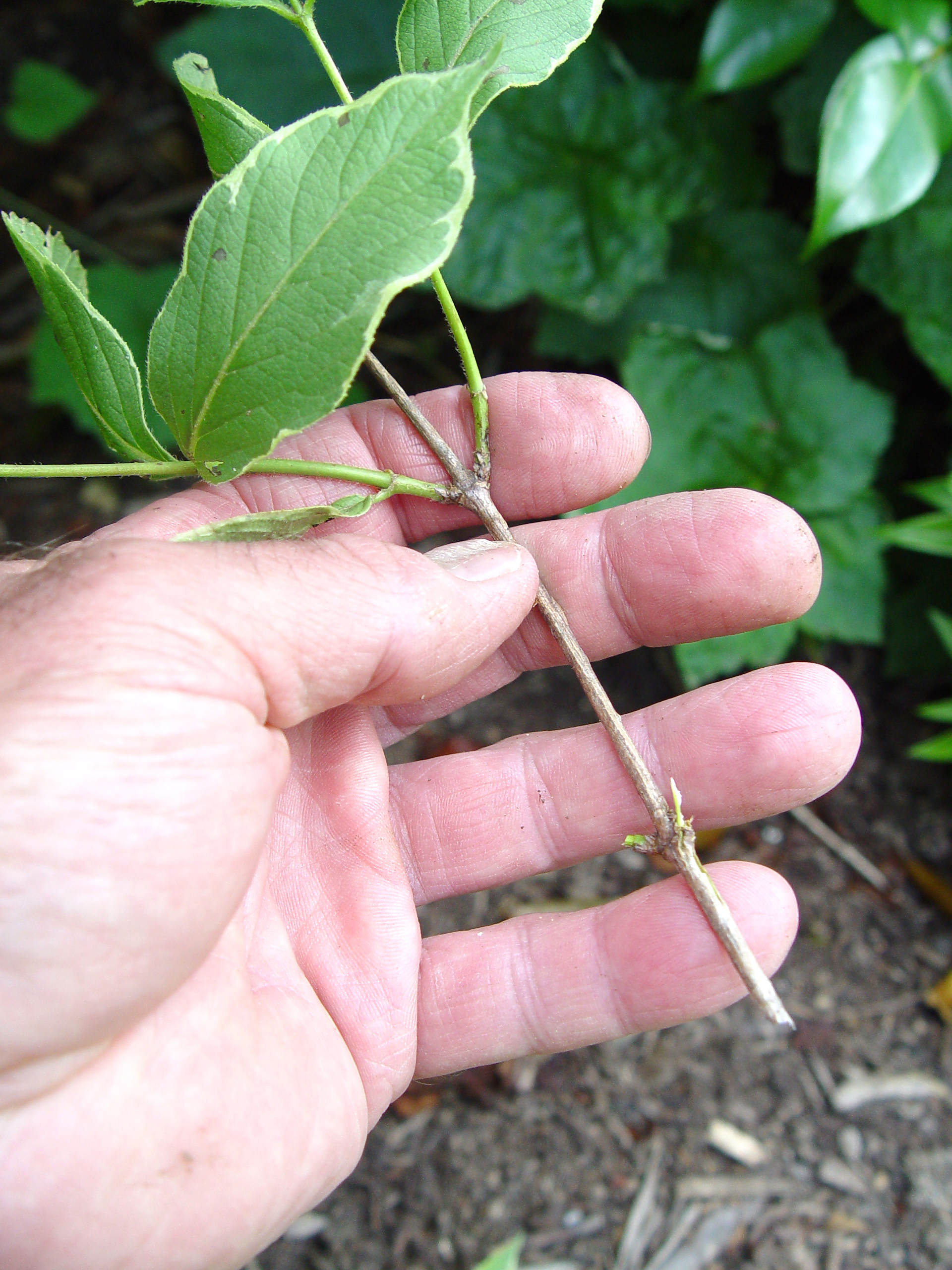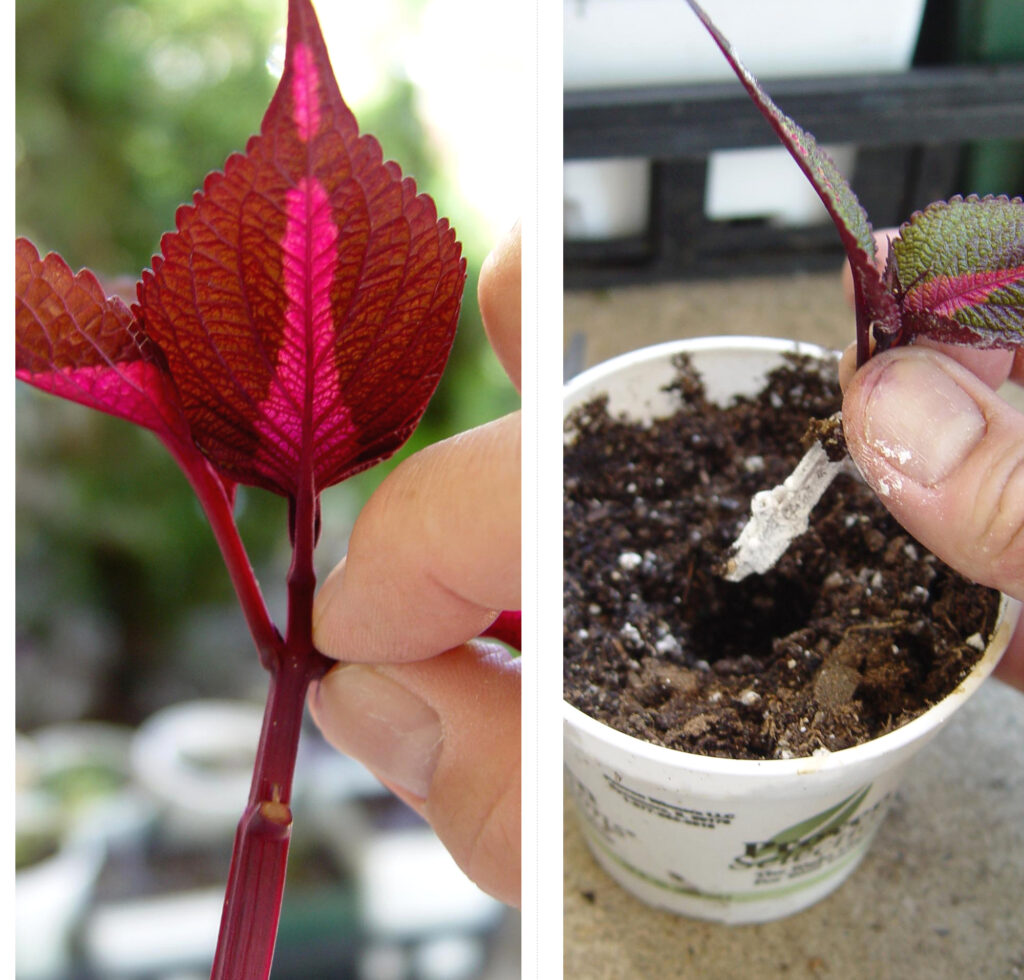![]() Many landscape plants can be reproduced at little to no cost by taking cuttings from the tips of a parent plant and sticking them in moist potting mix.
Many landscape plants can be reproduced at little to no cost by taking cuttings from the tips of a parent plant and sticking them in moist potting mix.
The process causes plants to send out roots from the cut ends, resulting in a new “baby” plant that’s an exact copy of the parent.
This is one of the main ways that growers produce new plants, and it’s easier than you might think.
Start by snipping a four- to six-inch section off the branch tip of a parent plant. Then pinch off leaves from all but the top set or two.
Stick the cut end into a pot of a light-weight soilless mix so that at least one – and preferably two or three – sets of the leaf pinch-off points (“nodes”) are buried.
A good mix is half coarse sand and half vermiculite, perlite, and/or light-weight potting mix.
Keep the medium consistently damp, and within a few weeks, new roots should poke out from the buried nodes. A good sign is when tiny new leaves start growing out of the cutting’s tip.
Dipping the cut ends in a powdered rooting hormone before sticking them sometimes encourages rooting. These inexpensive powders are available in small containers in most garden centers and catalogs.
Misting two to three times a day or installing a plastic-wrap “tent” over the pots are ways to help keep the potting medium moist until rooting occurs.
Many tropicals and annual and perennial flowers can be reproduced by tip cuttings, including coleus, geraniums, salvia, mums, begonias, impatiens, fuchsia, Persian shield, monstera, philodendron, plectranthus, purple-heart (Setcreasea), and jade plants.
But many trees, shrubs, and evergreens also can be reproduced by the same process. Some of the easiest are roses, boxwoods, hollies, junipers, elderberries, azaleas, dogwoods, gardenias, hydrangeas, and forsythia.
With woody plants, timing is a key variable. Some root best from young or “softwood cuttings” taken in late spring to early summer, while others root best from mature or “hardwood cuttings” taken in fall.
If you don’t get rooting on your first try, try again at a different time of year.
Increase success with cuttings by growing the young plants in a shaded or similar protected area in pots until the rootballs have matured to sizes similar to what you’d find in store-bought plants.
Even if you get just one cutting to root, that’s one free plant you didn’t have before.

George is author of five gardening books and is a retired Pennsylvania Certified Horticulturist who specialized in garden design for homeowners. He’s also a garden speaker, a garden tour leader, and since 1993, garden columnist for The Patriot-News newspaper and its PennLive.com website in Harrisburg, Pa.
This article is a web exclusive story that is an extension of the 2024 Annual Gardening Guide on how to save money in the garden. Find the full March feature, Digging for Dollars, here.


